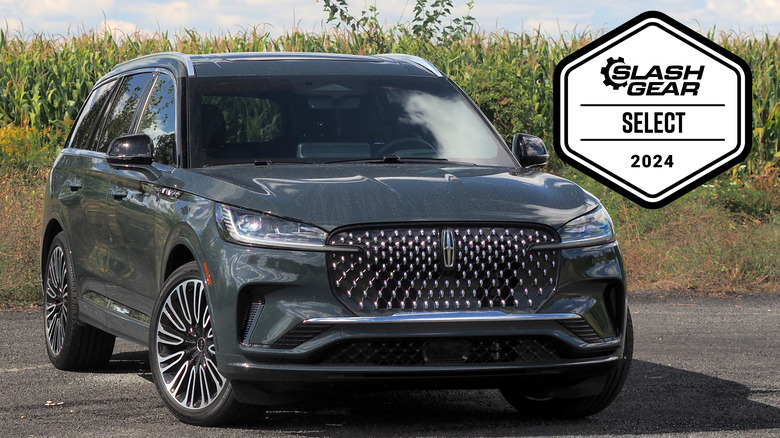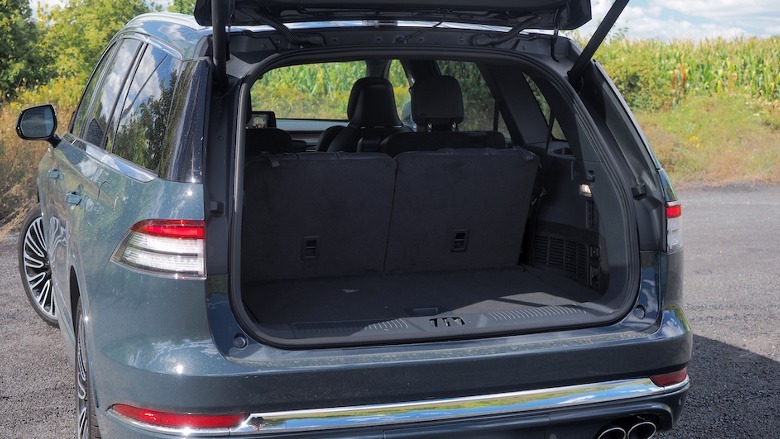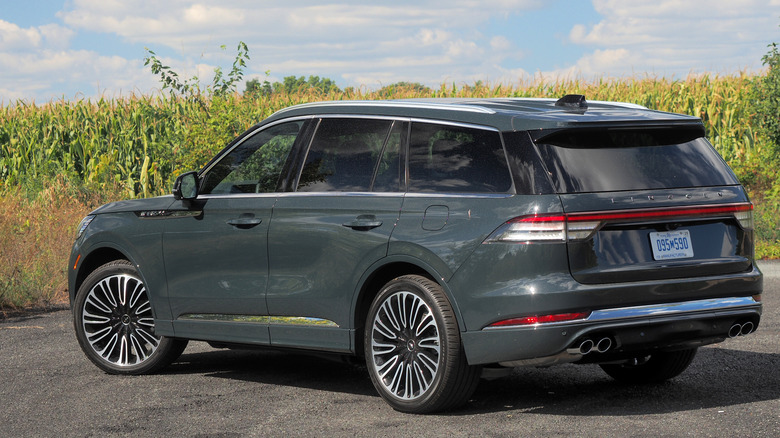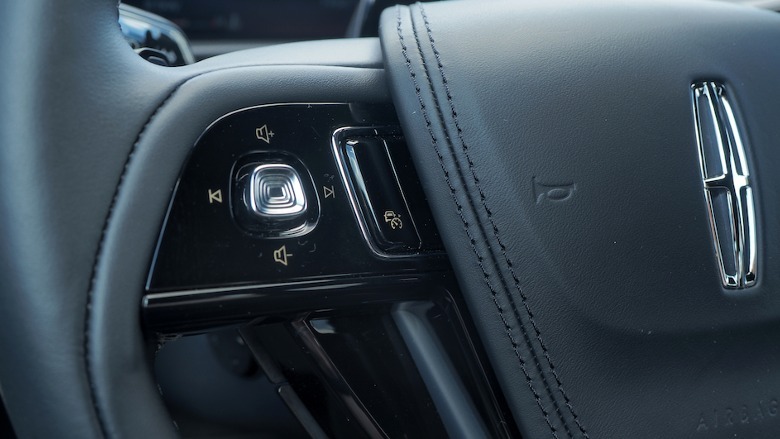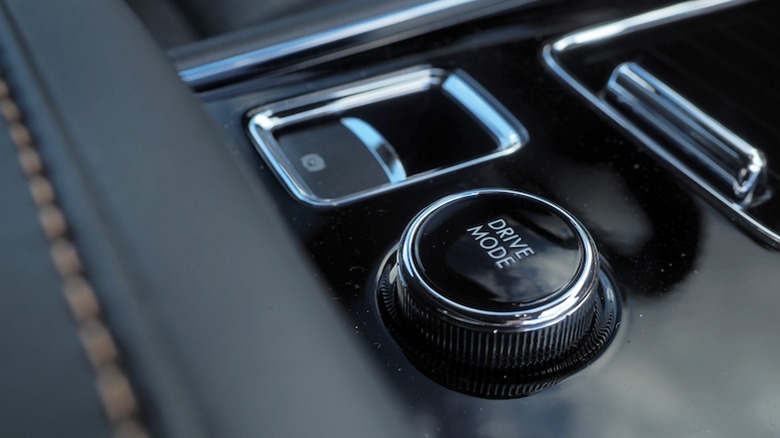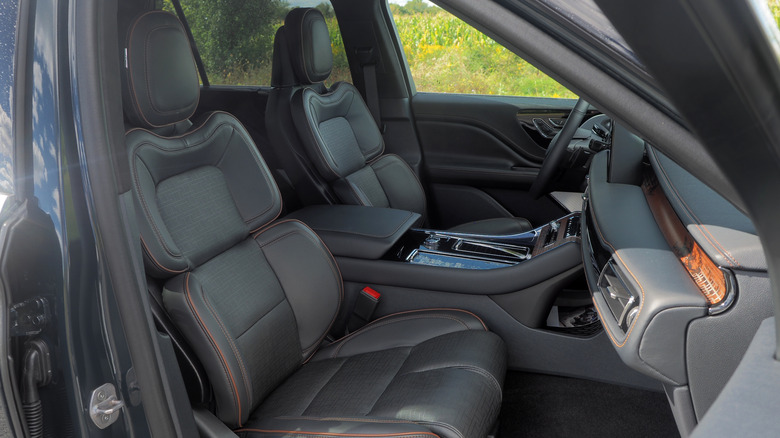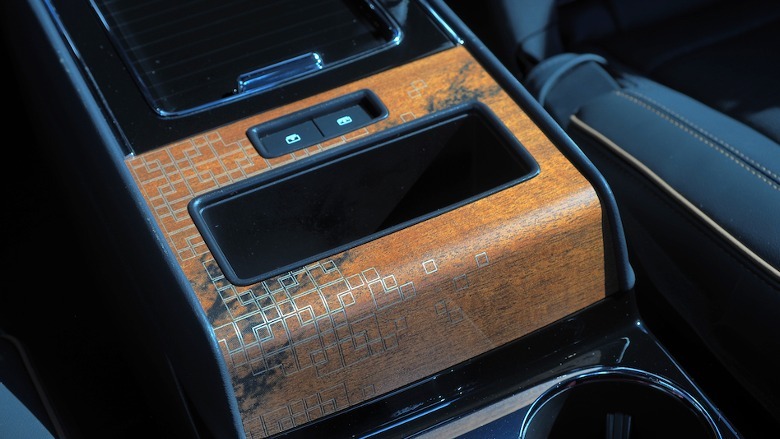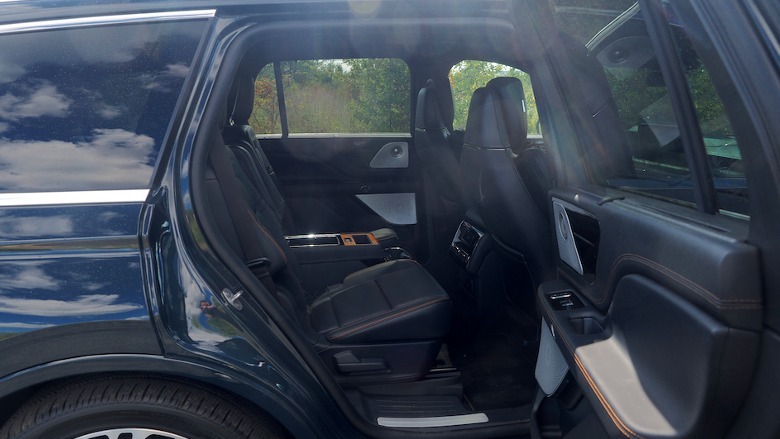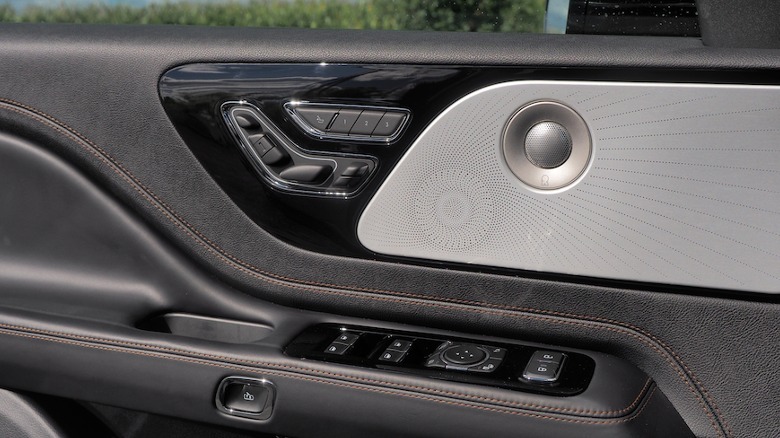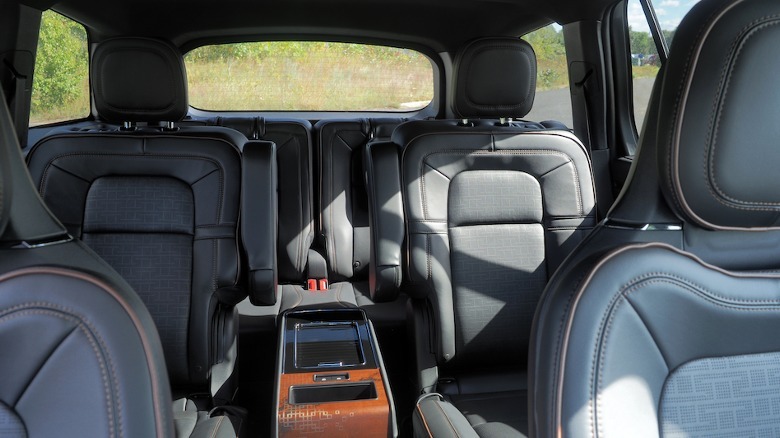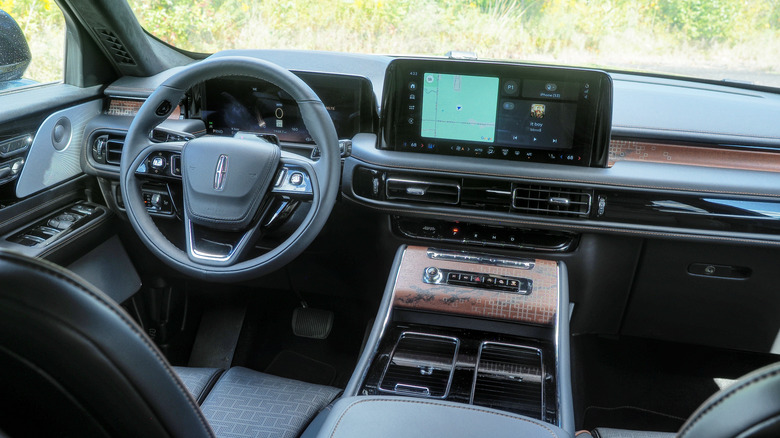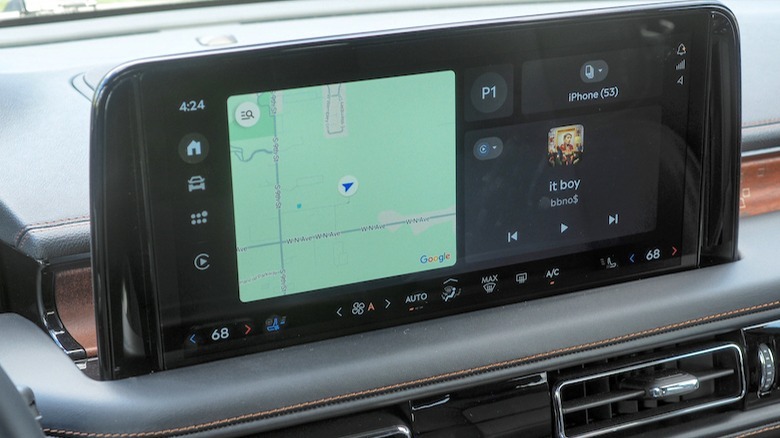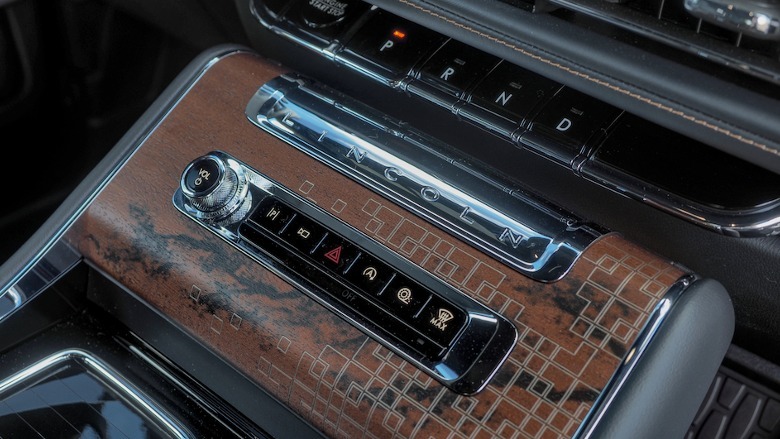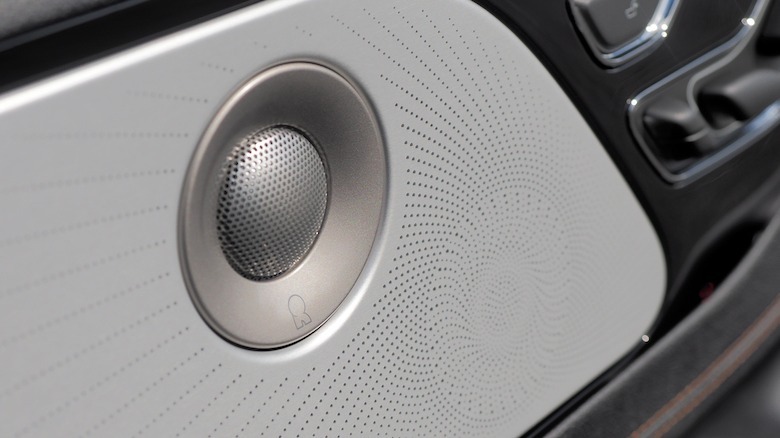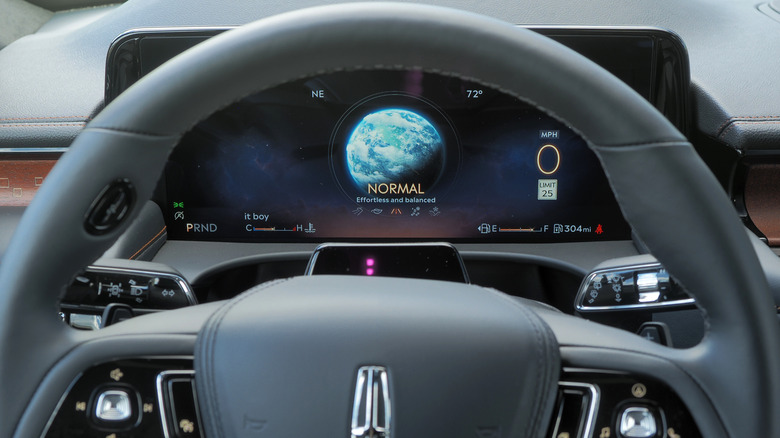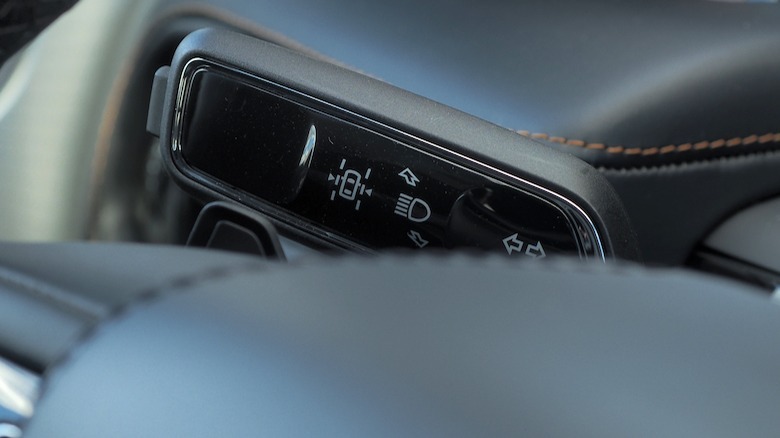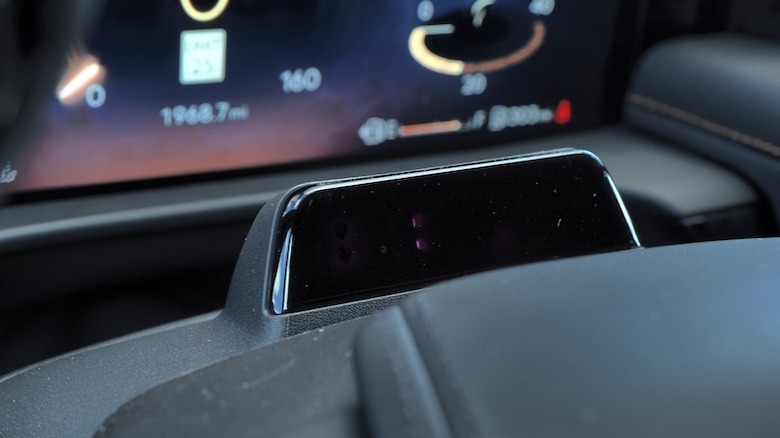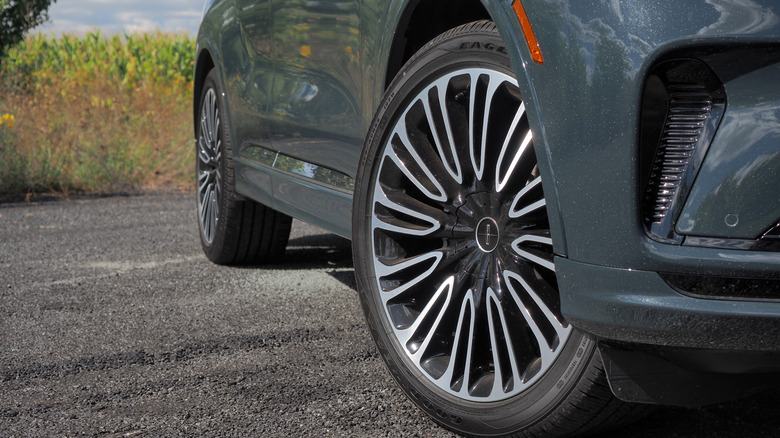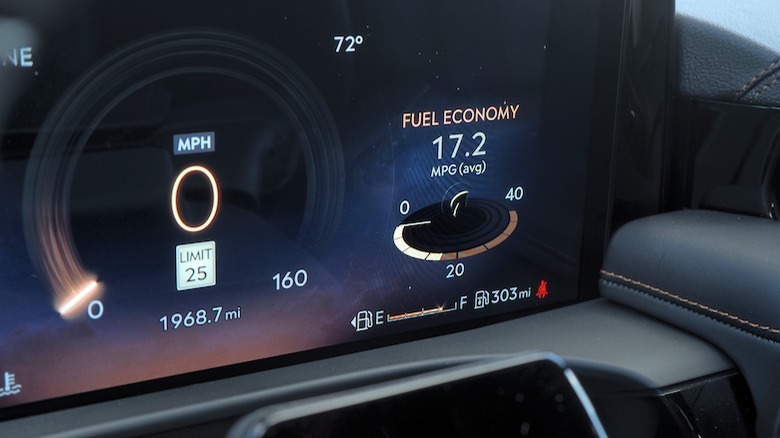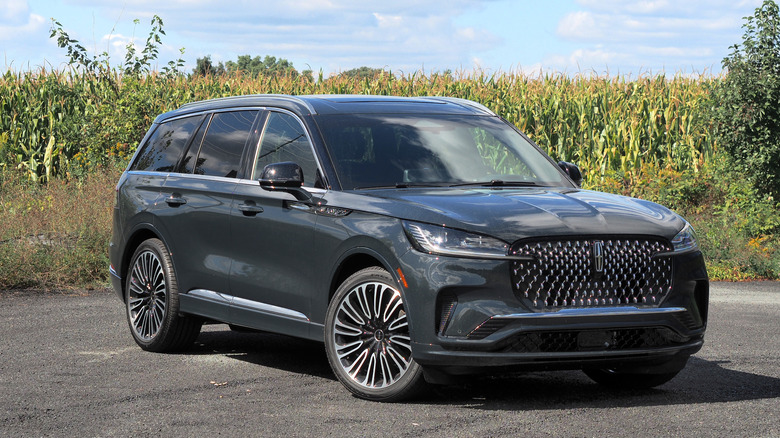2025 Lincoln Aviator Review: Distinctively Different, In Good Ways And Bad
- Handsome styling
- High levels of standard equipment
- Powerful twin-turbo V6 is standard
- BlueCruise makes highway trips easy
- More expensive than outgoing SUV
- Third row is only suitable for kids
- Engine sounds harsh when pushed
- No PHEV means middling fuel economy
When it comes to competing in the cutthroat luxury SUV segment, blending in is no longer an option. Lincoln's current tagline may be "The Power of Sanctuary," but it's only in the last couple of years that its line-up began to distinguish itself from rivals as SUVs you'd outright choose to take a break in. To achieve that, Lincoln has not only had to load up on technology, but double-down on making the personality of models like the 2025 Aviator more memorable.
The new Aviator is a handsome beast. Lincoln's family fascia — with whisker-like daytime running lights cutting into its chrome-licked, logo-studded grille — brings the right degree of sparkle, while the practical-but-slabbish profile has just enough rear roofline taper and side sculpting to avoid too many 2025 Ford Explorer comparisons. The 22-inch machined aluminum wheels, standard on the Black Label to replace the 20- and 21-inch versions on the cheaper Aviator trims, look suitably scaled.
At the rear, a trunk-spanning light bar competes with some chromework to give the SUV its glitter; quad chrome exhaust tips are also standard across all trims. Probably more important is the standard power tailgate. It reveals a 19.2 cu-ft trunk with all three rows of seats up; drop the third row with the power-release buttons in the rear and that expands to 42.7 cu-ft. Drop the second row, and you get a healthy 78.6 cu-ft.
An engine made to waft
Lincoln's twin-turbocharged 3.0-liter V6 certainly isn't short on grunt: the SUV's standard engine has 400 horsepower and 415 lb-ft of torque. It's paired with a 10-speed automatic transmission. Rear-wheel drive is standard, with all-wheel drive an option on the Reserve I and II trims, and standard on the Black Label trim.
All versions of the 2025 Aviator have adaptive suspension, its firmness adjusting according to drive mode among other factors. Air suspension — which lowers automatically to make entry and exit more straightforward, as well as changing ride height according to drive mode — is available on the Reserve trim, and standard on the Black Label.
It leaves the Black Label plush and smooth, and certainly not slow. Bury your right foot though — or switch to the "Excite" mode that's Lincoln's take on a "Sport" setting — and the soundtrack doesn't quite match the ride refinement. Honestly, if you'd told me it was a struggling turbo-four being pushed hard, I'd have believed you; the engine noise is definitely more Ford than its upscale sibling.
The interior is genuinely luxurious
Better, then, to leave the Aviator in "Normal" mode — which Lincoln describes as "Effortless and Balanced" — and enjoy the SUV doing what it does best: supple transportation of family and friends, in a cabin that could teach a few "true" luxury segment rivals a lesson or two.
Even the base Premiere trim 2025 Aviator gets tri-zone climate control with a second-row touchscreen for individual adjustment; eight USB ports spread around the cabin; a 110V AC outlet; ambient lighting; a heated steering wheel and a 13.2-inch dashboard touchscreen with navigation, embedded 5G with Wi-Fi hotspot, and a 10-speaker audio system.
Step up through the trims, and there's niceties like automatic heated and ventilated front seats; various levels of fancy leather; and quad-zone climate control with separate adjustment for the second and third rows.
A head-up display is standard on Reserve trim up, along with heated and ventilated outboard second row seats. Black Label cars get Lincoln's fiendishly-flexible 30-way power adjustable Perfect Position front seats.
Premiere and Black Label cars get a pair of captain's chairs for the second row, taking total seating to six. A three seat bench is a no-cost option on the Reserve trim, to accommodate seven. Reserve and Black Label trims with the captain's chairs can, for $500, upgrade the center console to a full version with more storage and buttons to control the shades on the standard panoramic glass roof.
Black Label wraps the tech in plenty of leather
Adults fit just fine in the Aviator's first and second row — the third manages legroom only suitable to kids — and there's plenty to like about the Invitation and Flight themes available on the Black Label trim. Savannah leather for the seats, leather wrap to the consoles and doors, and wood panels with intricate motifs leave the Aviator feeling distinct and classy. It might not be to everyone's exact taste, true, but at least it intentionally strays somewhat away from the de-facto "gloss black plastic and aluminum" which have generally come to define luxury in many vehicles.
The driver gets a 12.4-inch digital cluster display and tactile little multifunction joysticks on the steering wheel: they're a welcome physical control compared to the fiddly capacitive buttons many automakers have switched to. The proud-standing center touchscreen may not be paired with the dashboard-spanning screen that the 2024 Nautilus gets, but I suspect plenty of people will consider the absence of display overload a bonus not a hardship. Its Android Automotive OS underpinnings are swift and the layout is easy enough to use; wireless Apple CarPlay and Android Auto are supported, too.
There's a dedicated button row for frequently-accessed features like the standard 360-degree camera and parking assistance, though the keys themselves are small and the super-polished Lincoln logo above them kept flashing glare in my eyes.
I can't complain about the Revel Ultima 3D audio system — with 28 speakers — that's standard in the Black Label trim, mind. It sounds fantastic.
Hands-free BlueCruise comes as standard
Lincoln gets bonus points for making BlueCruise, Ford's hands-free driver assistance technology, standard across the board on the 2025 Aviator. While still not autonomous — as a Level 2 system, albeit an advanced one, the human at the wheel remains responsible at all times — it's handy for helping with long stretches of highway driving.
The Aviator pops up a reminder when you're on a road that has the necessary pre-mapped data; hit the steering wheel button and the SUV will hold itself centered in the lane, and keep pace with traffic ahead. A steering column mounted camera makes sure you're paying attention: look away for longer than a handful of seconds, and BlueCruise will shout at you (and eventually deactivate altogether).
Hitting the turn signal sees the Aviator check the adjacent lane and, assuming there's space, move across without needing you to touch the wheel. Unlike GM's Super Cruise on select vehicles, though, BlueCruise currently won't automatically change lanes if traffic ahead slows down. On roads where BlueCruise isn't supported, there's regular adaptive cruise with (hands-on) lane-centering assist. Blind spot warnings, cross-traffic alerts, and pre-collision assist are all standard, too.
With the PHEV gone, fuel economy takes a hit
While Lincoln has been pretty heavy handed with the standard features, one old Aviator option is conspicuous by its absence. There's now no plug-in hybrid (PHEV) available, and though the 21 miles of electric-only driving and 56 MPGe combined economy rating of that variant wasn't exactly stunning for an electrified SUV, it was still an improvement on the gas-only Aviator.
For the 2025 Aviator, Lincoln says rear-wheel drive examples should be capable of 18 mpg in the city, 25 mpg on the highway, and 21 mpg combined. All-wheel drive sees those numbers shift to 17 mpg, 25 mpg, and 20 mpg respectively. My own mixed driving only just nudged above 17 mpg.
Lincoln isn't the only automaker in the segment missing a simple economy trick, here. Cadillac's three-row XT6 and Genesis' GV80 both offer V6 engine options, but both skip electrification. It's odd, though, for Lincoln to be going backward in the fact of the general industry tide.
2025 Lincoln Aviator Verdict
There's something to be said for Lincoln finally embracing its longstanding promise of "American luxury" in a way that actually feels distinct among its high-end SUV rivals. The 2025 Aviator won't be to everyone's taste, but it definitely feels more confident in its own sheet metal, and in Black Label form it's positively lavish inside.
Then again, so it ought to be: this Cenote Green example crests $92k with destination and options. Most buyers should probably stick to Lincoln's mid-tier Reserve trims, priced from $67,980 before destination. Thanks to a healthy standard equipment list, you can afford to be selective with what you add to that sticker.
Those wanting a lively SUV with more reward for the driver should look elsewhere, with the Aviator's preference for placid cruising — and standard BlueCruise — standing out from the get-go. Similarly, anybody hoping for a hybrid to go with their three-row seating will be disappointed; look, perhaps, to the 2025 Volvo XC90 PHEV to satisfy there. All the same, the 2025 Aviator stands out primarily because it no longer aims to ape the bigger names in its category, and Lincoln's SUV is all the better for it.
